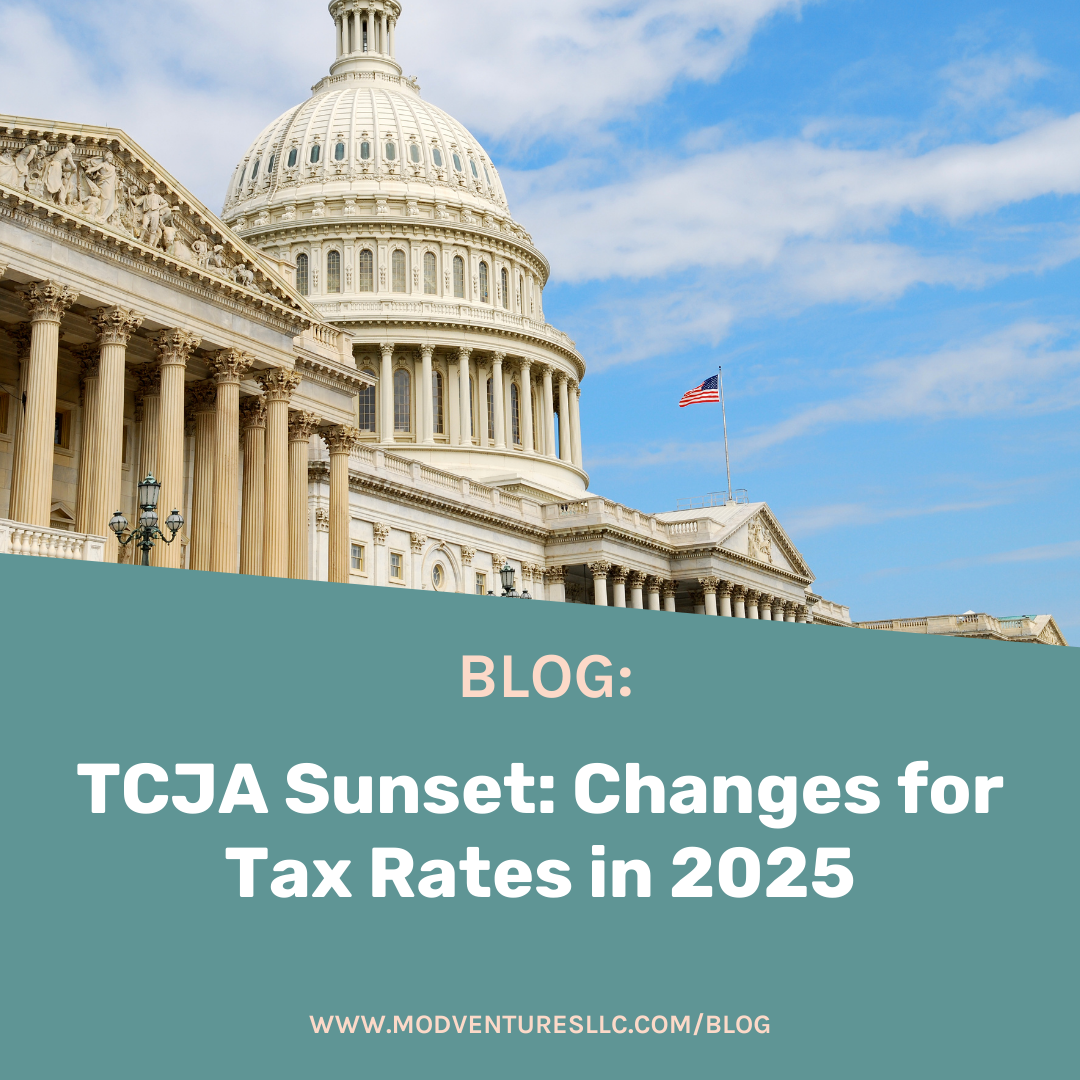The Tax Cuts and Jobs Act (TCJA) brought sweeping changes to the tax landscape when it was signed into law in 2017. While it brought lower tax rates and higher deductions for many, these provisions weren’t set in stone forever.
The TCJA included a “sunset” clause, which means some of its benefits are set to expire at the end of 2025. As this date approaches, it’s important to understand what’s coming, how tax rates may change, and what it could mean for you.
What is the TCJA Sunset?
When Congress passed the TCJA, they made most of the tax cuts for individuals temporary, set to expire or “sunset” after a certain period. This was largely due to budget constraints. As a result, unless Congress takes action to extend or modify these provisions, tax rates and deductions will revert to pre-2018 levels starting in 2026.
This sunset affects tax brackets, deductions, credits, and several other individual and small business tax benefits.
Expected Changes in Individual Tax Rates
The TCJA temporarily lowered individual tax rates, creating seven tax brackets that ranged from 10% to 37%. When the sunset happens in 2025, these brackets are set to shift back to higher pre-TCJA levels. Here’s a general look at what you might expect:
- Current TCJA Tax Brackets (10%, 12%, 22%, 24%, 32%, 35%, and 37%) will likely revert to the previous structure (10%, 15%, 25%, 28%, 33%, 35%, and 39.6%). So, the top marginal tax rate, which is currently 37%, could go back up to 39.6%.
This means that, without any extensions or modifications, most taxpayers could see an increase in their tax rates beginning in 2026. For some, this change could bump them into a higher bracket and lead to a higher tax bill, even if their income doesn’t change.
Standard Deduction and Personal Exemptions
The TCJA nearly doubled the standard deduction, making it a more attractive option than itemizing deductions for many taxpayers. In 2025, the standard deduction may shrink back to its pre-TCJA level, which was much lower than it is now. Currently, for 2024, the standard deduction is:
- $13,850 for single filers
- $27,700 for married couples filing jointly
Once the TCJA sunsets, this deduction is expected to decrease, which could mean higher taxable income for those who don’t itemize. Additionally, the TCJA removed the personal exemption (a set amount you could deduct for yourself and each dependent).
If the sunset happens as planned, personal exemptions may return in 2026, but at an amount much lower than the current standard deduction levels.
Child Tax Credit and Other Key Credits
The TCJA also made the Child Tax Credit more generous, increasing it to $2,000 per child and expanding eligibility. However, if the sunset goes into effect, the credit could shrink significantly, reducing to $1,000 per child and narrowing in eligibility.
Additionally, the temporary $500 credit for non-child dependents could be eliminated. Other credits, such as the Earned Income Tax Credit (EITC) and education credits, are also subject to changes and could return to prior amounts or structures.
Changes for Small Businesses
The TCJA introduced the Qualified Business Income (QBI) deduction, allowing certain small businesses and self-employed individuals to deduct up to 20% of their business income. This deduction was a major benefit for pass-through businesses (sole proprietorships, partnerships, S-corporations), allowing many to reduce their taxable income. However, this deduction is set to expire in 2025 as well.
If Congress doesn’t extend or modify the QBI deduction, small business owners and freelancers may face a higher tax burden starting in 2026. Without this deduction, pass-through income will be taxed at the individual’s regular tax rate, potentially resulting in a significant increase in taxes owed for many small business owners.
Estate and Gift Tax Exemptions
The TCJA also temporarily doubled the estate and gift tax exemption, allowing individuals to pass on more wealth tax-free. Currently, the exemption is over $12 million per individual, but after the sunset, it could fall back to around $5 million (adjusted for inflation).
This reduction would mean that more estates could be subject to estate tax, impacting individuals planning to transfer wealth to heirs.
What to Do Before 2025
With the TCJA sunset on the horizon, now is a good time to start planning. If tax rates rise and deductions shrink, many individuals and businesses will face higher tax bills. Here are a few steps to consider:
- Revisit Your Tax Planning: Talk with a tax professional about the potential impact of these changes on your tax situation. They may recommend strategies such as accelerating income, maximizing retirement contributions, or taking advantage of current deductions before they expire.
- Consider Estate Planning Adjustments: If the estate tax exemption drops, you may want to review your estate plan to take advantage of the higher exemption while it’s still available.
- Plan for Changes in Deductions and Credits: Anticipate that the standard deduction, child tax credit, and other credits may be reduced. Adjust your budget and consider if itemizing deductions will become beneficial again.
- Evaluate Business Structure: For small businesses, it may be wise to review your business structure or maximize your QBI deduction while it’s still available.
Final Thoughts on The TCJA Sunset Tax Changes
The TCJA sunset in 2025 could bring some significant changes to individual and business taxes, and planning now can help soften the impact.
These changes may affect a wide range of taxpayers from higher tax brackets to reduced deductions and credits. Staying informed and proactive with tax planning can help you navigate this transition and avoid surprises in your tax bill.
If you have questions about how these changes might impact you or need help preparing for the sunset, consider reaching out to a tax professional who can help guide you through this period of change. By taking action now, you can better position yourself to handle whatever tax shifts 2026 brings.
And, as always, if you’re a small business owner and you have any questions or need any support, get in touch with the ModVentures team today!
You May Also Love
CLOSE






